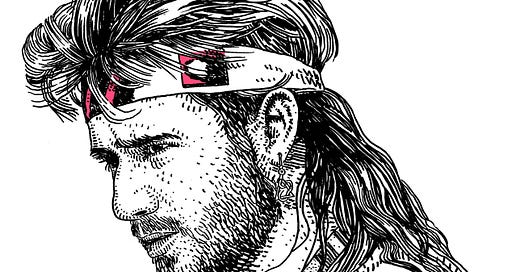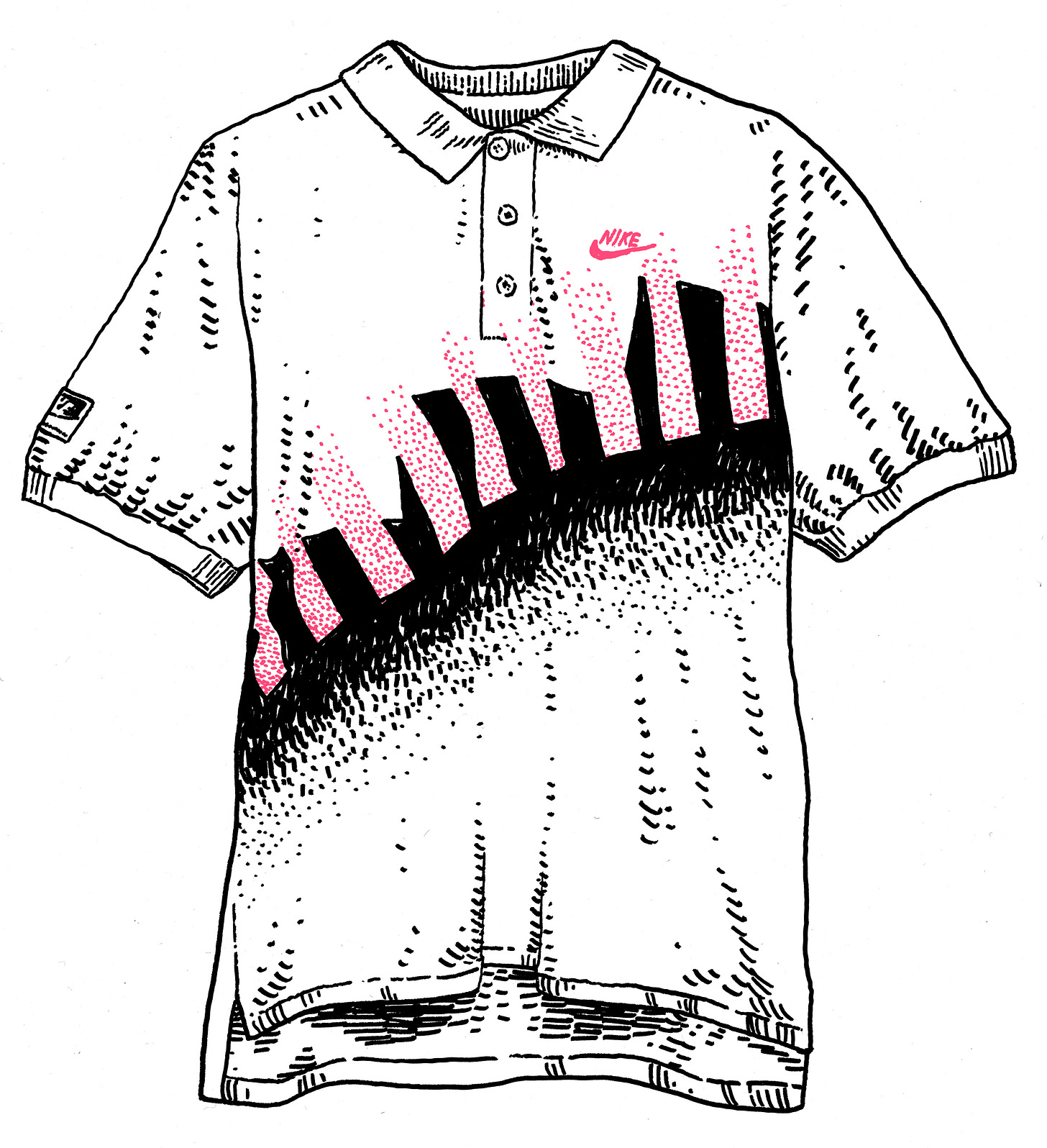Howdy Sports Stories Amigos,
Over the past couple months, Adam and I have been discussing what we want Sports Stories to be. We love doing these newsletters -- but after more than a year, we want to push the experience forward in a meaningful way, both for ourselves and for our readers.
It sounds corny, but we really appreciate the community we’ve built around this thing. We want to foster it more purposefully, and offer more to those of you who read these emails, reply to them, and pass them along to your friends. So with all that in mind, we’re announcing some changes.
Sports Stories will be moving from an occasional publication to an actual weekly newsletter that lands in your inbox every Tuesday. The newsletter will remain completely free.
With that said, we’re also asking readers who value what we do to offer voluntary support through Substack’s payment system. There will be a few different payment options. Each will come with a small physical token of our appreciation:
If you can contribute at least $5/month or $50/year we will send you a personalized Sports Stories postcard to say thanks.
If you contribute $100/year, we will send you the postcard plus a special Sports Stories zine.
You also have the option to support at any rate you want above $50/year.
If this sounds awesome to you, you can click here to move to a paid subscription. If not, then nothing changes. You’ll keep getting Sports Stories in your inbox just as you already do. Sports Stories will always be a labor of love. But your support can give us the gift of time to make each issue special.
Later this month, we’ll also be launching a Sports Stories store. Think of it as like a merch table for your favorite band. If you love Adam’s art, this will be a great way to support him and the newsletter. More on that soon.
We’re excited to stretch the form of an illustrated newsletter about sports history into new places, both in terms of the subject matter itself and the way we present that subject. Speaking of which…Andre Agassi.
There’s a point early in his memoir, Open, where Agassi lingers on a description of the gentleman who strings his rackets. Like a lot of great athletes, Agassi was very particular about his routines. Everything had to be just so.
“I obsess about my bag. I keep it meticulously organized, and I make no apologies for this anal retentitiveness,” he writes. Then: “The tennis bag is a lot like your heart -- you have to know what’s in it at all times.”
He goes on to explain how he needed to have eight rackets with him for each match, and that they had to be stacked in order from most recently strung on the bottom to least recently strung on the top.
“My racket stringer is old school, Old World, a Czech artiste named Roman. He’s the best, and he needs to be: a string job can mean the difference in a match and a match can mean the difference in a career, and a career can mean the difference in countless lives.”
Let’s do our best to ignore how illicit the phrase “string job” sounds. Agassi clearly loves this man and appreciates him on a level that goes beyond the sum of his contributions to Agassi’s performance on the court. Agassi even brought him along as part of the entourage to all his big tournaments.
“Occasionally, feeling lost and lonely in some foreign city, I’ll sit with Roman and watch him string a few rackets. It’s not that I don’t trust him. Just the opposite: I’m calmed, grounded, inspired by watching a craftsman. It reminds me of the singular importance in this world of a job done well.”
What makes this passage so striking is not that a professional athlete who honed his own craft over decades of rigorous repetitive exercise might appreciate good craftsmanship. It’s that the athlete in question is Andre Agassi, who challenged everything about the staid, stuffy culture of tennis during his career and has spoken and written openly about actually hating the sport.
Agassi is a guy who literally stopped playing Wimbledon for a few years in part because he didn’t want to wear all white -- he thought it was silly. (It is.) Then he came back after a few years off, and won the damn thing. It’s poignant that Agassi could find comfort in racket stringing: one of the sport’s most elemental rituals. Even as he added to the sport’s mythology and lore, Agassi also challenged it. He was complicated, molded from birth by his father Mike (a Sports Story unto himself: Olympic boxer born of Armenian parents in Iran) into a tennis machine. But tennis also nearly destroyed Andre Agassi.
Why did he keep playing then? His career fell apart in the mid-1990s with injuries and even crystal meth use. He could have been done with the sport he hated. He could have disappeared and built himself back up into a functioning human away from the limelight. He had all the money in the world. He had already proven his greatness.
Tennis made him crazy. It wrecked his body. But something drove him back. Why do we do the things we do? The external rewards and consequences meant a lot to Agassi. He was never shy about that. He understood how much cash was on the line. He understood how many people’s lives and livelihoods were intertwined with his performance. There was a sense of duty to them.
But there was also this innate urge to keep simultaneously perfecting and unmaking the sport. There was this sense of pushing tennis further and further beyond the limits of the recognizable. There was this need to define and redefine himself over and over again. And in the end, the work was the thing. He disappeared into it. And sometimes, he created something beautiful. And sometimes he emerged unrecognizable.
When Adam and I started this project, we didn’t really know what we were getting into. Some words and some pictures. Some stories. But the deeper we get into it, the more we realize that it’s not something we could give up even if we wanted to. We’re going to be like Roman: steady and dedicated and mindful of every word we write and line we draw. But we’re also going to be like Andre. We’re going to keep pushing to brighter and weirder places and stretch this thing as far as we can stretch it.
Thank you for reading. Thank you for subscribing. Please give yourself the gift of Sports Stories this holiday season. And please do us the favor of sharing this with your friends and enemies alike.
Yours,
Eric and Adam




